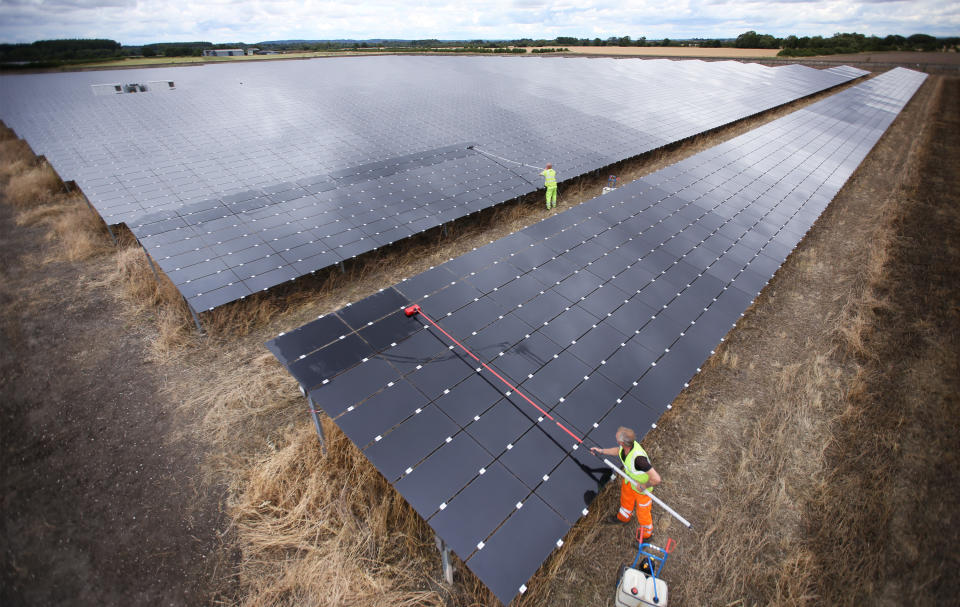Big electricity producers may be told to cut output as solar and wind power surges

Major gas and nuclear power plants may be ordered to cut back on production this summer – to make room for wind and solar.
The National Grid – which oversees the UK’s electricity generation network – said growing supply from smaller wind and solar farms that bypass the grid would see demand fall.
“Increased supply and demand variability caused by these periods of low demand and high levels of renewable generation can create operability challenges,” it said.
“As a result, we may need to take more actions to curtail generation and possibly instruct inflexible generators to reduce their output in order to balance the system.”
MORE: World’s largest wind turbine installed off Aberdeen coast
Such has been the growth in the recent years of solar and wind power generators serving localised areas that demand for electricity from the traditional power stations that feed into the National Grid has fallen away.

Earlier this week, the first of 11 giant wind turbines – the largest in the world – was installed in the sea off Aberdeen.
MORE: British Gas increases dual fuel bills by 5.5% hitting 4 million customers
Vattenfall, the company behind the wind farm, said just one rotation of its huge blades would provide enough electricity to light up the average UK home for a day.
The drive the make homes more energy efficient – through such simple measures as better insulation – and the industry’s efforts to reduce carbon emissions is also seeing demand for electricity through the grid fall.
National Grid said minimum demand on the transmission system would be 17gW this summer, 600mW lower than last year and close to a record low of 16.9gW in 2016.
MORE: Mammoth wind farm planned for middle of the North Sea
Solar power accounted for almost a quarter of total UK electricity generation on the sunniest days of 2017.
However, the National Grid points out that the growth of solar and wind power is presenting new challenges as they are both subject to favourable weather conditions.
Making accurate forecasts on minimum demand from the network is as difficult in predicting how sunny or windy it will be for any given period.

 Yahoo Finance
Yahoo Finance 
